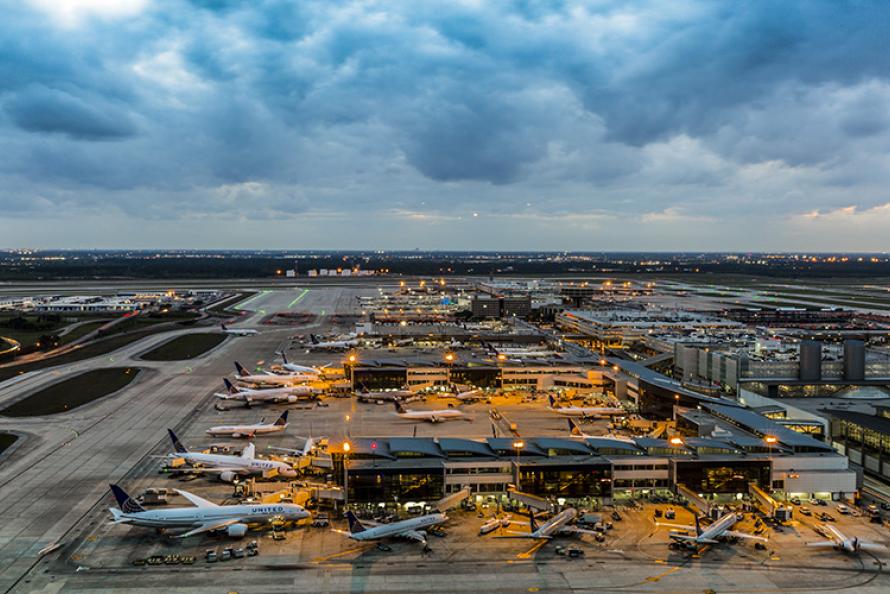For the second year in a row, Bush Airport’s annual Part 139 inspection — a detailed review by the FAA of operations at the airport — came back without a discrepancy, meaning in all aspects of operating an airport safely and efficiently, the FAA found that Bush Airport met or exceeded the requirements of Part 139, which is required to earn an Airport Operating Certificate.
“The level of detail and vital nature of the requirements in meeting the Part 139 specifications requires a commitment to excellence and professionalism by not just airport personnel, but also from the myriad partners who work together to make the facilities of the Houston Airport System both safe and successful,” said Chief Operating Officer Jesus Saenz. “A discrepancy-free inspection — not once, but now two years in a row — is something everyone can be proud of, and affirms the hard work and dedication of everyone at Bush Airport.”
This is no drive-by review. To ensure that airports with Airport Operating Certificates are meeting the requirements of Part 139, FAA Airport Certification Safety Inspectors conduct week-long certification inspections on site. The reviews include checks on:
- Pre-inspection review of office airport files and airport certification manual.
- In-briefing with airport management.
- Administrative inspection of airport files, paperwork, etc., which also includes updating the Airport Master Record (FAA Form 5010) and review of the Airport Certification Manual/Specifications (ACM/ACS), Notices to Airmen (NOTAM), airfield self-inspection forms.
- Movement area inspection that check the approach slopes of each runway end; inspect movement areas to find out condition of pavement, markings, lighting, signs, abutting shoulders, and safety areas; watch ground vehicle operations; ensure the public is protected against inadvertent entry and jet or propeller blast; check for the presence of any wildlife; check the traffic and wind direction indicators.
- An aircraft rescue and firefighting inspection that includes a timed-response drill; a review of aircraft rescue and firefighting personnel training records, including annual live-fire drill and documentation of basic emergency medical care training; a check of equipment and protective clothing for operation, condition, and availability.
- Fueling facilities inspection that includes checks of airport files for documentation of their quarterly inspections of the fueling facility and a review of certification from each tenant fueling agent about completion of fire safety training.
- A night inspection that evaluates runway/taxiway and apron lighting and signage, pavement marking, airport beacon, wind cone, lighting, and obstruction lighting.
And, if the FAA finds an airport is not meeting its obligations under Part 139, it often imposes an administrative action. It can also impose a financial penalty for each day the airport continues to violate a Part 139 requirement. In extreme cases, FAA might revoke the airport's certificate or limit the areas of an airport where air carriers can land or takeoff.
“The results from the attention to detail and commitment to excellence highlighted in the FAA’s 139 inspection report is a testimony to our relationship with the FAA and the daily attention to operating conditions at the airport,” said Bush Airport General Manager Ted Kitchens. “It takes an entire team dedicated to professional pride and a laser focus on safety by the entire team at Bush Airport, as compliance is not ‘a single point in time audit’ but rather something that has to be documented throughout the year. The zero discrepancy 139 audit is not limited to Bush, but encompasses all the airports in the Houston Airport System, which have maintained that level of distinction during a time that has seen a parade of major events through our facilities that were managed both professionally and successfully.”
Earlier in March 2017, results from a survey of nearly 14 million airline customers cited Bush Airport as one of the most improved airports in the world, and among the best in the world for airport dining. At the Skytrax World Airport Awards — a global benchmark of airport excellence, and widely known as the Passengers Choice Awards — Bush Airport was ranked No. 3 among the most improved airports in the world and the No. 9 airport in the world for dining.
Beginning in 2016, the Houston Airport System played a vital role in a series of public events that helped out the City of Houston in the national and international spotlight.
Lauded as one of the most successful events in Super Bowl history, the Airport System’s role in helping Houston earn accolades for its organization and execution hit its apex on Monday, Feb. 6, 2017, when it smoothly and successfully handled the exodus of hundreds of thousands of fans heading home after enjoying Super Bowl LI. On that day — dubbed “Exodus Monday” for the sheer volume of passengers departing beginning with the morning after the game — nearly 190,000 passengers passed through George Bush Intercontinental Airport and William P. Hobby Airport, with more than 70 percent of that number departing from the two facilities.
As well, Bush Airport partnered with United Airlines to help transport United States’ Olympic team members to the Summer Olympic Games in Rio, and hosted a number of welcoming events for athletes returning from Rio, and did the same for Special Olympic participants traveling to and from Brazil for the games.
And, in April 2016, the Airport System helped welcome more than 75,000 fans Houston for the NCAA men’s basketball Final Four championship weekend. An army of volunteers helped welcome supporters from all four schools both at Bush and Hobby airports. They were on hand to help with information about the game, transportation and more. Signage and information locations were established throughout both airports to provide information about Houston and the events before, during and after the game.
